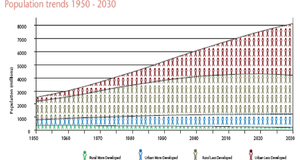An Ethnography of Water Birth and its Representations on YouTube
By
2011, Vol. 3 No. 06 | pg. 3/3 | « Water Birth Evaluation NarrativesWater birth is currently an alternative birth practice. Water birth is a controversial method of giving birth due to the safety risks mentioned in the existing medical literature on the topic. The parents I interviewed discovered water birth through family or friends in their real lives, through natural childbirth books, through documentaries such as The Business of Being Born and Birth as We Know It, unintentionally when searching YouTube.com for “natural+birth” videos and “home+birth” videos, and by reading birth stories posted by other mothers online on blogs or on forums such as the forums at mothering.com. It is possible that the number of women becoming interested in alternative methods of giving birth, such as water birth, may increase as more parents utilize the internet for a source of childbirth information and engage in watching birth videos on YouTube.com. For the general ability to understand the unique birth choices of the participants in my study, and for the sake of future maternity care policy considerations, it is important to document the experiential narratives that my interviewees gave when they were asked specifically about their own water birth experiences. Amanda, 31 year old mother of three from Canada describes her two water birth experiences claiming they were both very short and fast. She says she supports water birth since it decreases the incidence of tearing by keeping the perineum warm, floating the body, and decreasing the pressure of the mother's full body weight. Similarly, Evelyn from Australia describes her enthusiasm for water birth stating that she had a ten pound baby without tearing. She says the water allows women “to be in a really good position for birthing without physically being really tiring.” She compares a hypothetical out of water experience to her actual in water experience saying that if she were to have been squatting outside of water in the obscure position that she was squatting in when she was immersed in the water, then a significant portion of her overall energy would have been devoted to holding herself in that position. Alternatively, her actual experience in the water gave her body the buoyancy and relief from the pressure of body weight to allow her to be in an upright obscure birthing position without losing too much energy for herself.Maya, from Hawaii expresses how relaxing it was to have her body floating in the water that relieved the pressure on her legs. Sydney from New Zealand enjoyed the floating and the relaxation that her muscles felt with the water immersion. Sydney says the water felt “calm”, “nurturing”, and “safe” and that the thought of interventions and pharmaceutical pain relievers never entered her mind because of the powerful physiological effects of the water. Marisol who had a quick and highly satisfying home water birth experience said “ I will definitely plan to have any subsequent babies in water. I don't think I can handle the pain outside of water.” My interviewees unanimously express that in the future instance of pregnancy they would greatly desire the opportunity to have another water birth. They also express passionate interest in activism efforts to make water birth an available birthing option for more women. When asked to describe their water birth experiences they replied with many positive words such as “peaceful”, “soothing”, “calming”, “relaxing”, “empowering”, “easy”, “wonderful”, “safe”.Some of my interviewees went so far as to say that their birth was “painless” or “virtually pain-free”. A few of the parents express that the experience was so profound for them, that they have difficulty accurately describing the experience with words. ConclusionThe participants in my study lead me to believe that women, especially in the United States but also in other worldwide geographical locations, wish to have increased affordable accessibility to care from midwives following evidence-based, women centered models of maternity care. My interviewees also express the desire to ensure women have access to the option to give birth immersed in water. Based on their direct experiences with water birth they believe that water birth can be a birthing method that reduces the mother's sensations of fear, pain, and exhaustion. Evidence from my study allows me to safely assume that the influence of online visual birth media and mother’s textual narratives published on the internet will continue to influence the personal childbirth decisions of pregnant women who use the internet as an educational tool. As the influences they discover from other mothers in their social networks explain childbirth in ways they view as more favorable, or making more sense to them experientially, they may devalue the authoritative knowledge within the dominant medicalized paradigm of birth. The mothers that participated in this research demonstrated the authoritative value they put into the voices of other mothers. Childbirth is only one topic I have discussed in regard to women sharing their own authoritative knowledge with each other online. Further research into the online activities that mothers engage in to stimulate social and political discourse will reveal countless other areas where they are phasing out old forms of authoritative cultural knowledge and creating new paradigms for understanding additional issues mothers are passionate about for future social change. ReferencesBowden, Kelly, Dale Kessler, Mike Pinette and Elizabeth Wilson.2003.Underwater Birth: Missing the Evidence or Missing the Point? Pediatrics: 112; 972-973. Chaichian, Shahla, Ali Akhlahgi, Firouzeh Rousta, and Mahboobeh Safavi. 2009. Experience of Water Birth Delivery in Iran. Archives of Iranian Medicine. Volume 12, Number 5, 468-471. Davis-Floyd, Robbie E. 2004. Birth as an American Rite of Passage. Second ed. University of California Press. Eberhard, Jakob, Sonja Stein, and Verena Geissbuehler. 2005. Experience of Pain and Analgesia with Water and Land Births. Journal of Psychosomatic Obstetrics & Gynecology. 26(2):127-133. Geissbuhler, Verena and Jakob Eberhard. 2000. Waterbirths: A Comparative Study: A Prospective Study on More than 2,000 Waterbirths. Fetal Diagnosis and Therapy, Clinic for Obstetrics and Gynecology. Geissbuhler, Verena and Jakob Eberhard. 2003. Experience with water births: a prospective longitudinal study of 9 years with almost 4,000 water births. Gynakol Geburtshilfliche Rundsch. 43(1):12-8. Gilbert, R. 2002. Water birth- a near drowning experience [commentary]. Pediatrics. 110: 409. Harris, A. 2008. Young women, late modern politics, and the participatory possibilities of online cultures. Journal of Youth Studies. 11(5), 481-495. doi:10.1080/13676260802282950. Jordan, Brigitte. 1993. Birth in Four Cultures: A Cross-cultural Investigation of Childbirth in Yucatan, Holland, Sweden, and the United States. Fourth ed. Waveland Press, Inc. McCandlish, R., and M. Renfrew. 1993. Immersion in Water during Labor and Birth: The Need for Evaluation. Birth 20(2): 79-85. Odent, M. 1983. Birth Under Water. Lancet; 2(8365-8366): 1476-1477. Odent, M. R. 1995. Birth Under Water: Sink Or Swim. BJOG: An International Journal of Obstetrics & Gynaecology.102(1):81-82. Pinette, Michael G., Joseph Wax, and Elizabeth Wilson. 2004. The Risks of Underwater Birth. American Journal of Obstetrics and Gynecology. 190(5):1211-1215. Schroeter, Ken. 2004. Water Births: A Naked Emperor. American Academy of Pediatrics. YouTube.com. 2005. About YouTube. Electronic document: http://www.youtube.com/t/about_youtube Accessed December 1, 2010. Suggested Reading from Inquiries Journal
Inquiries Journal provides undergraduate and graduate students around the world a platform for the wide dissemination of academic work over a range of core disciplines. Representing the work of students from hundreds of institutions around the globe, Inquiries Journal's large database of academic articles is completely free. Learn more | Blog | Submit Latest in Anthropology |


















